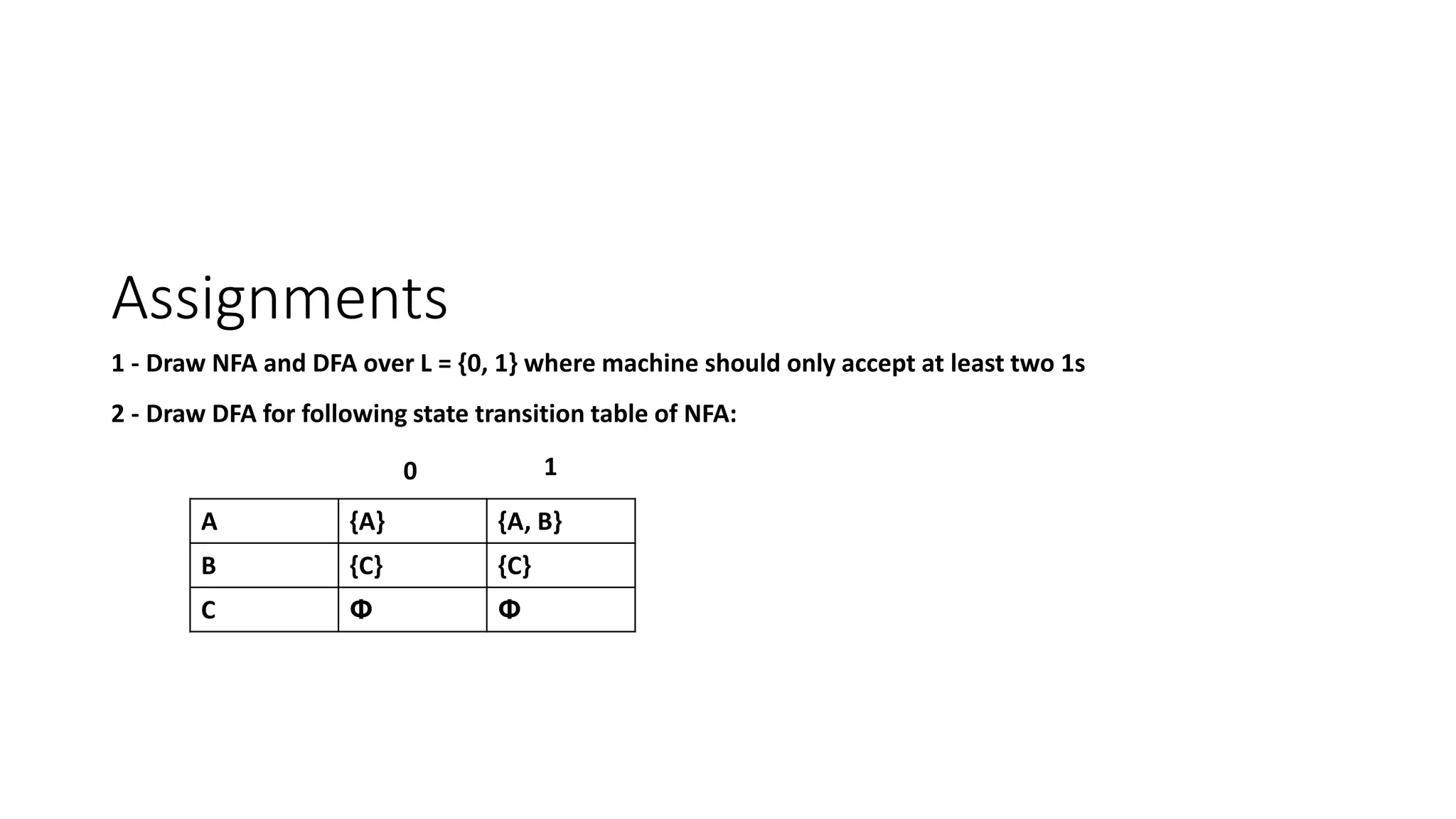Here are the steps to solve the assignments:
1. Draw NFA and DFA over L = {0, 1} where machine should only accept at least two 1s
NFA:
A
1
B
0,1
1
C
DFA:
A
1
B
1
C
2. Draw DFA for following state transition table of NFA:
A {A} {A, B}
B {C} {C}
C Փ Փ
0 1
DFA:
A
0,1
B
1
C
The key steps are to identify the states of the N





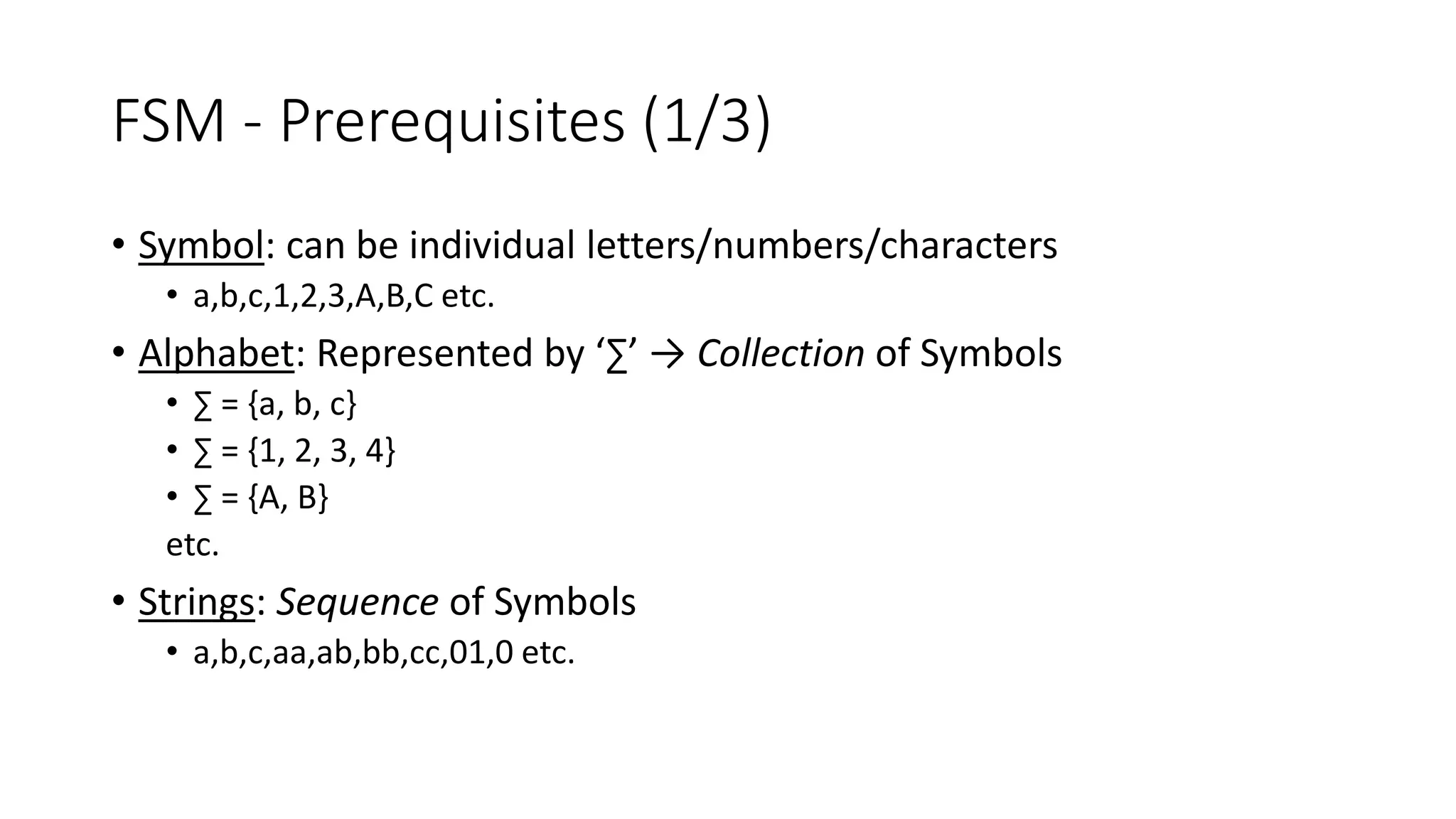
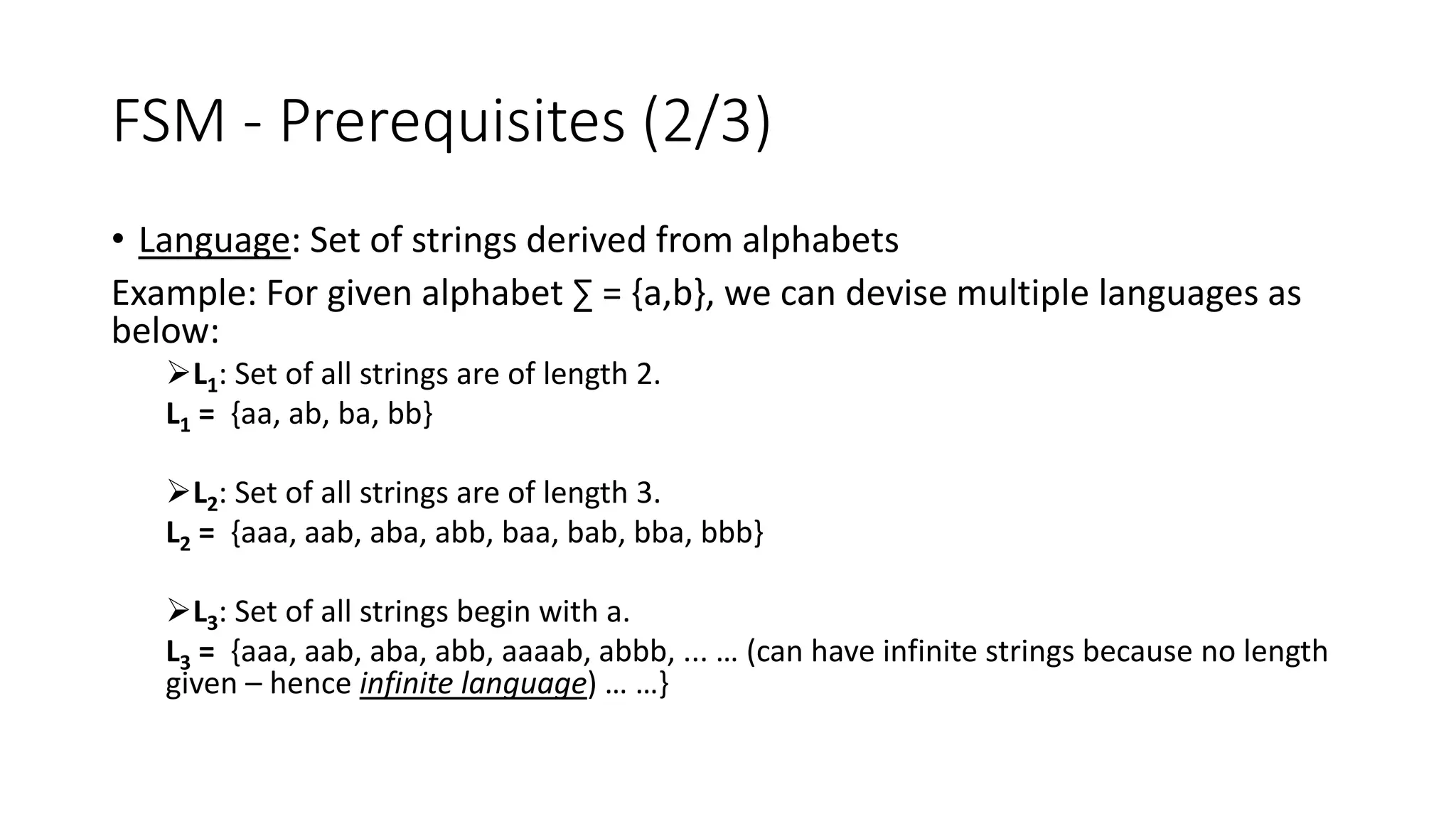
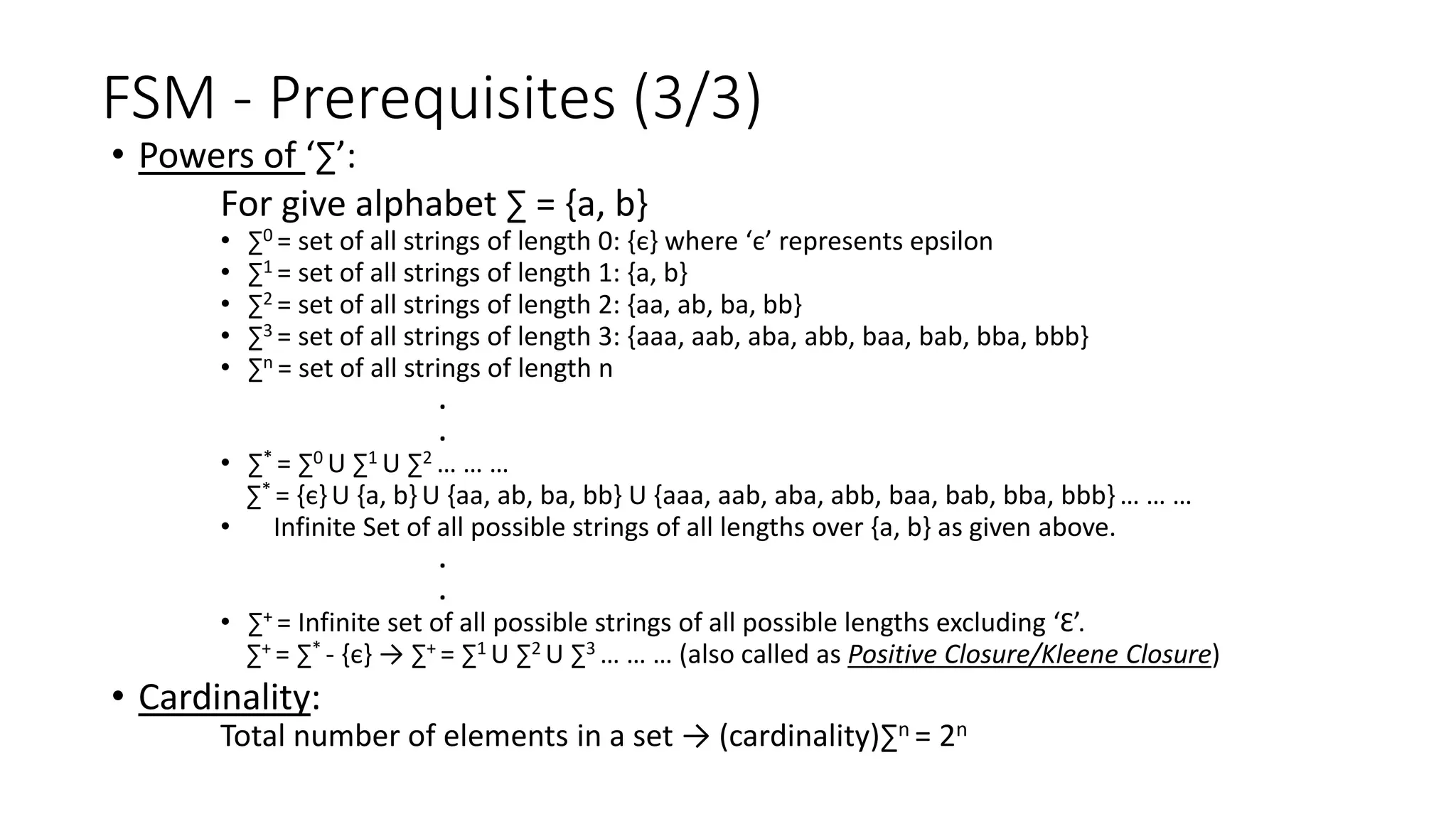
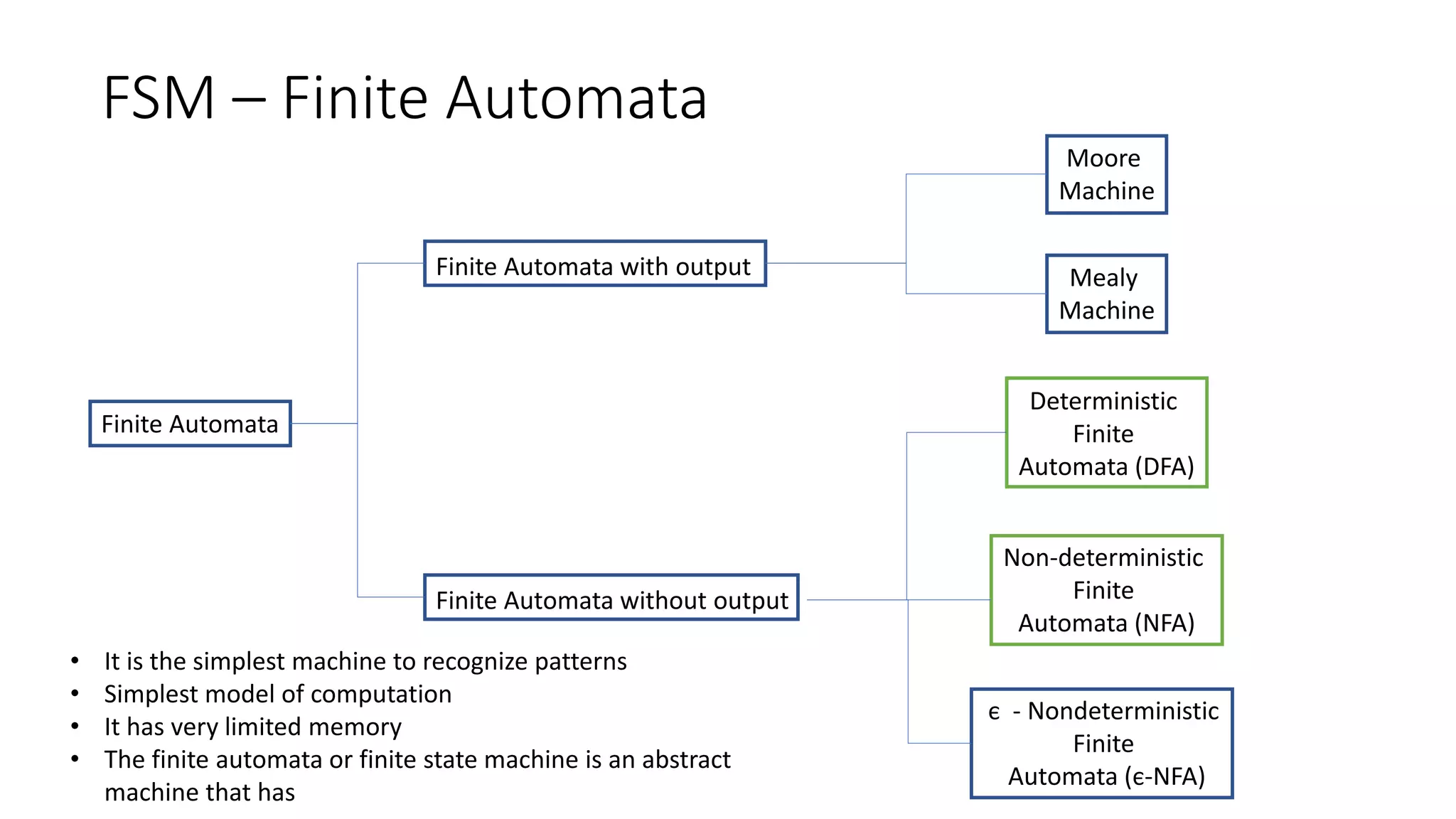
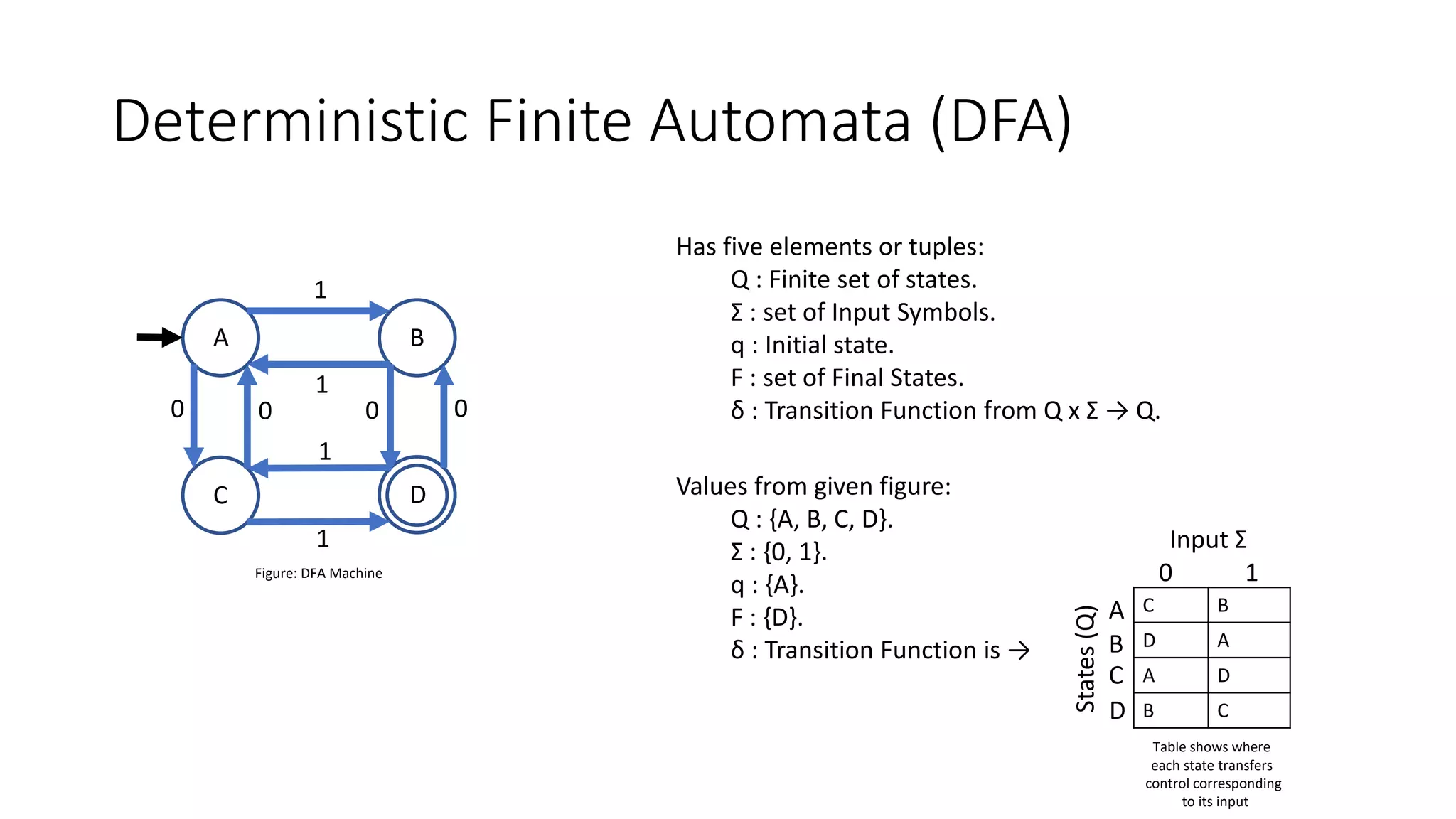
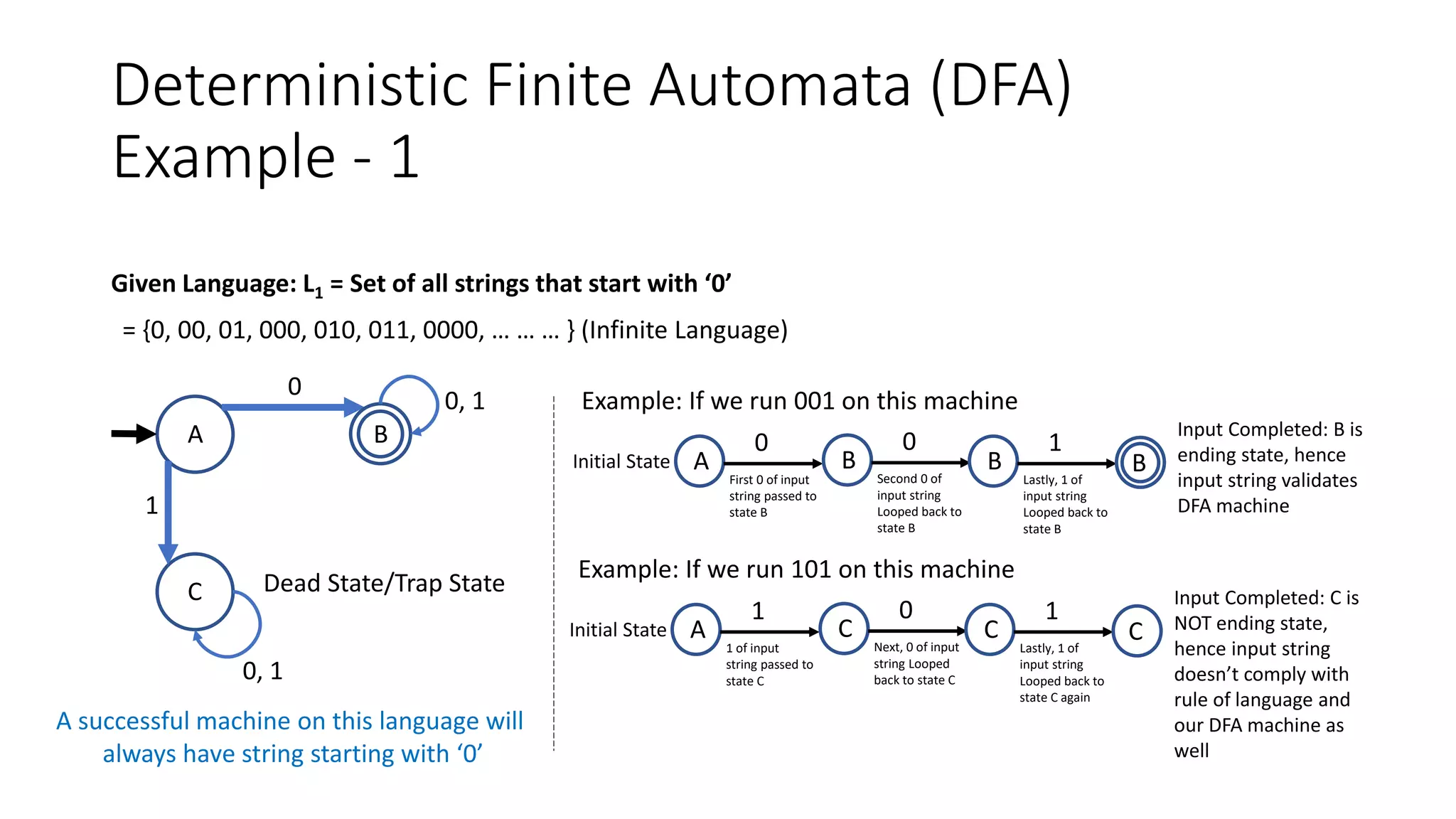
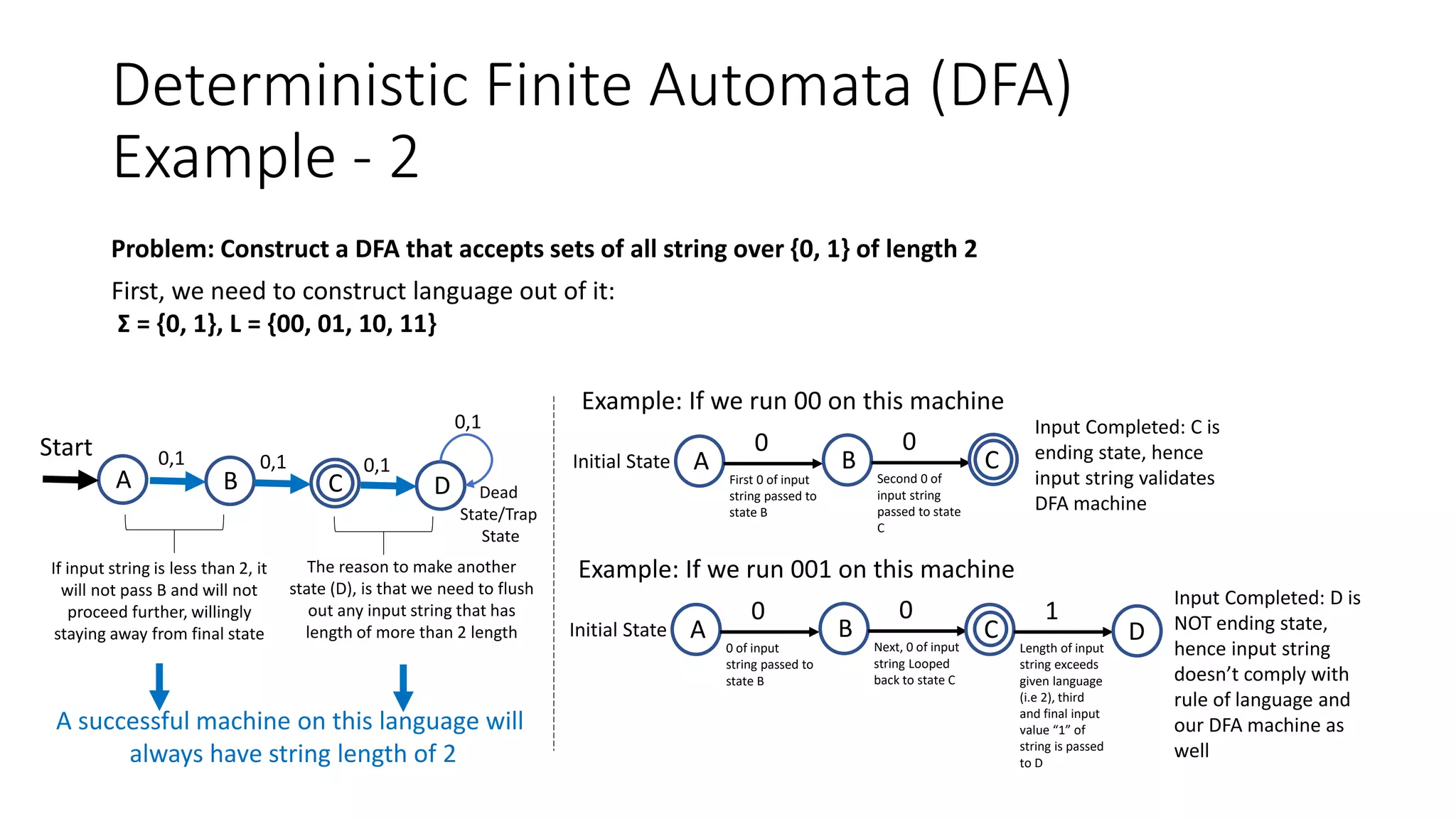
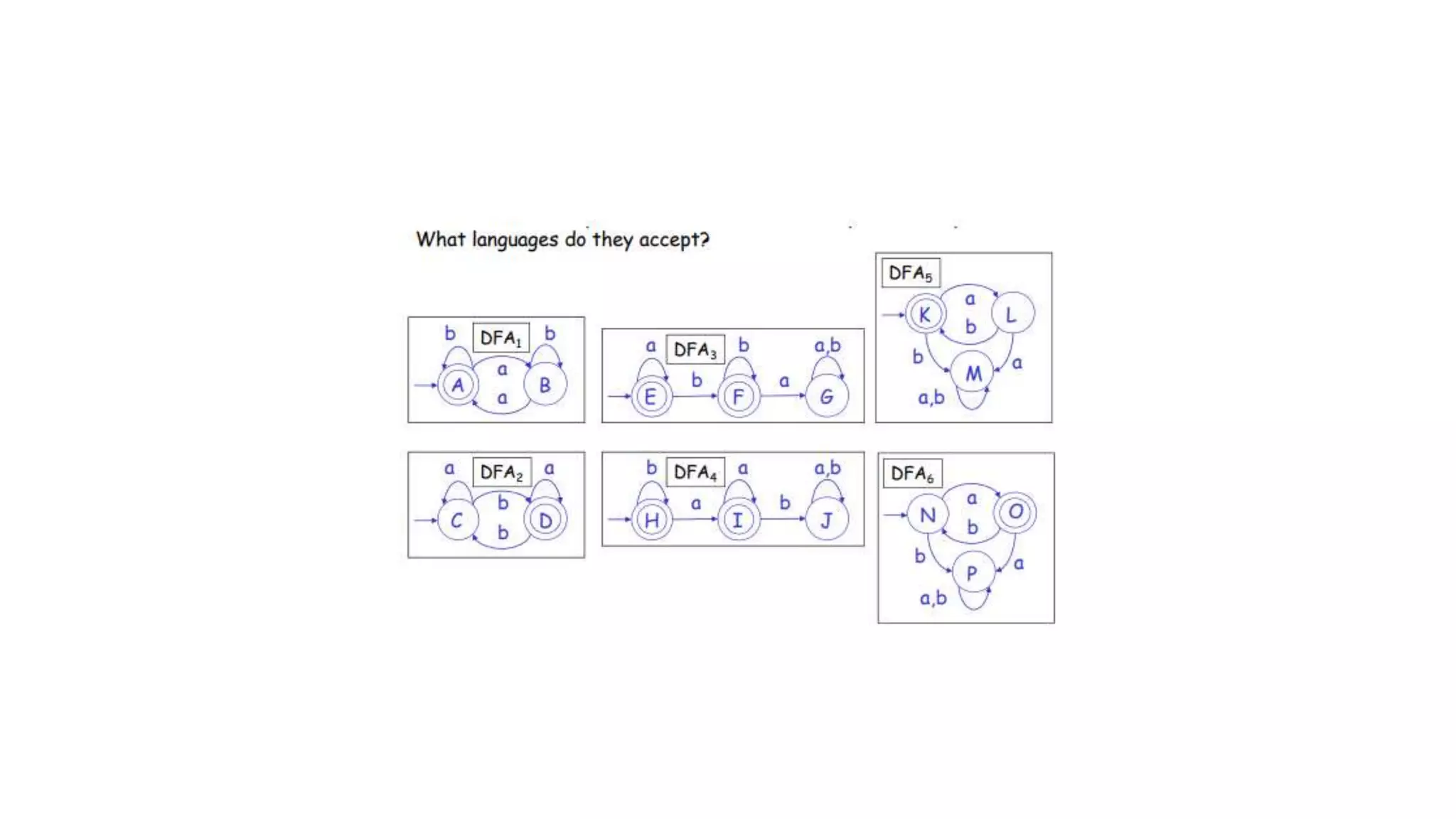
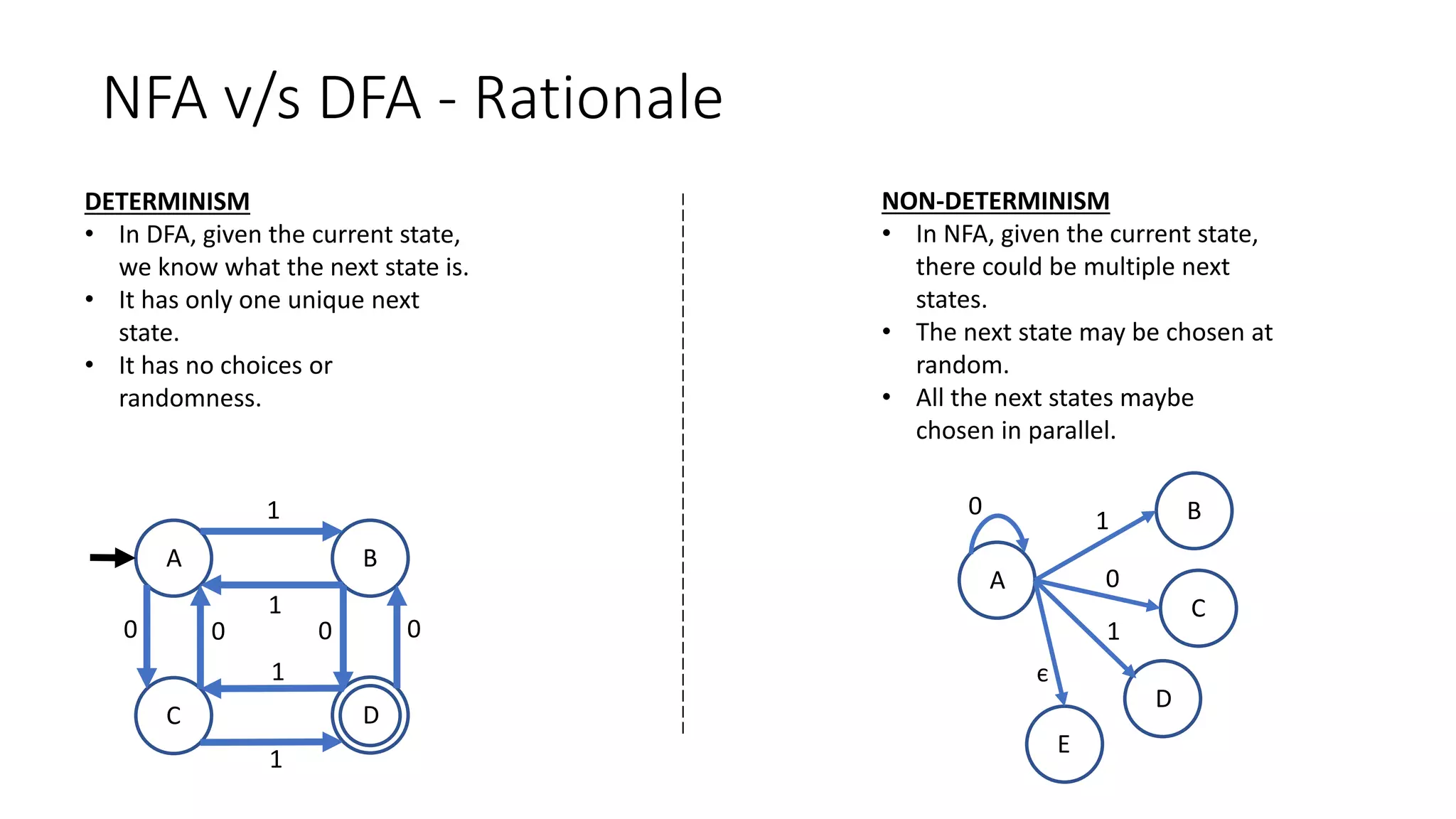
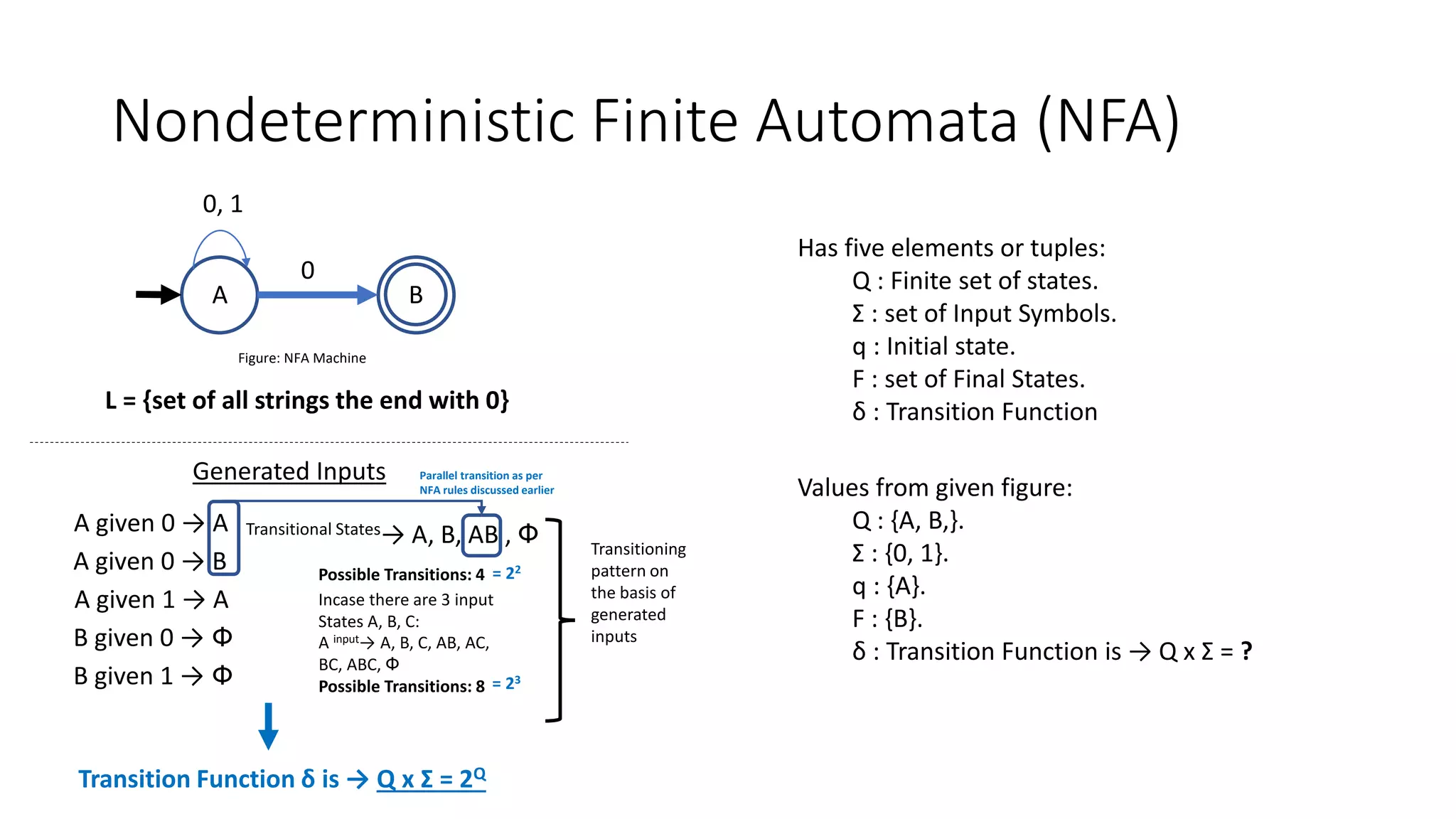
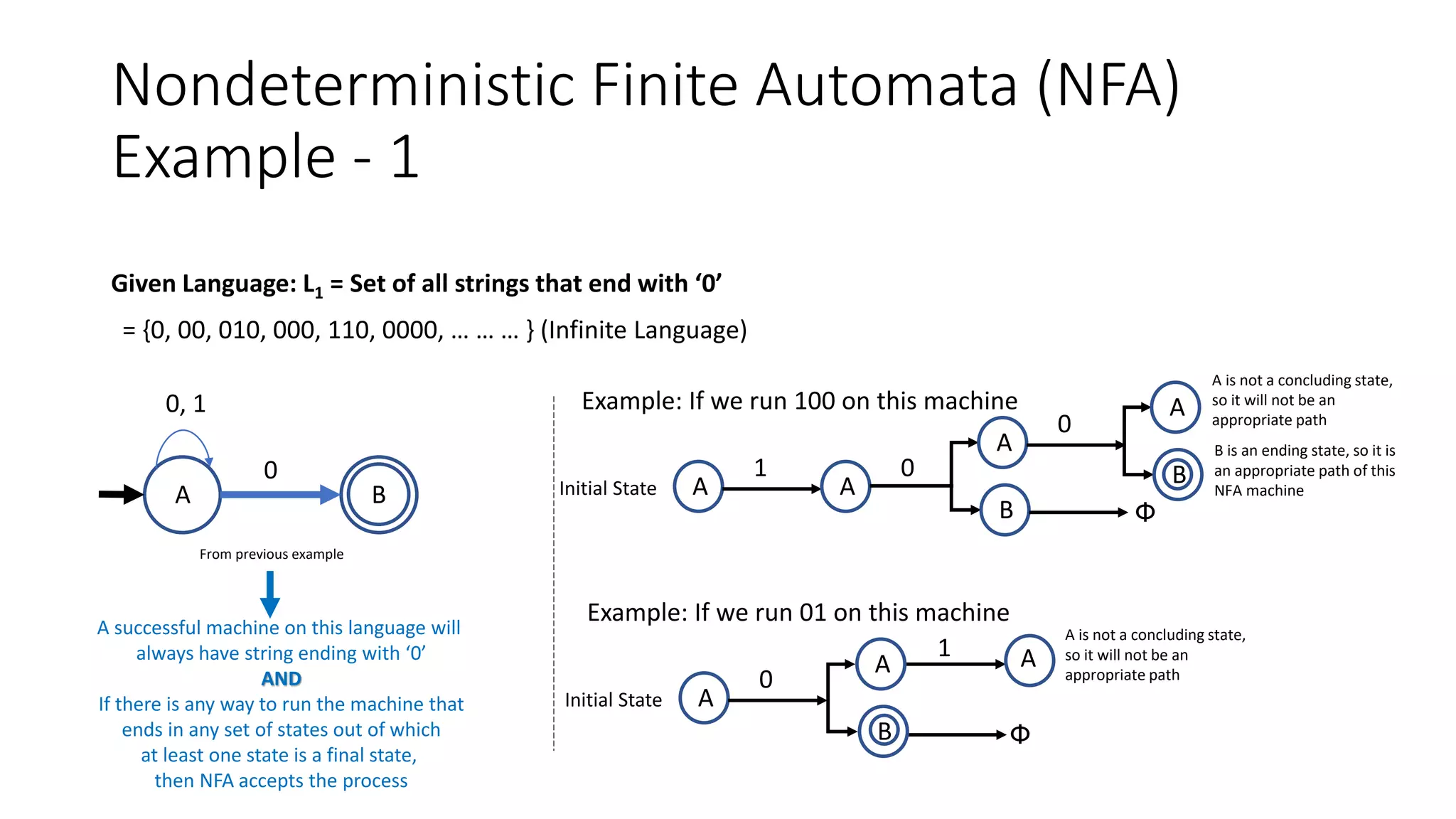

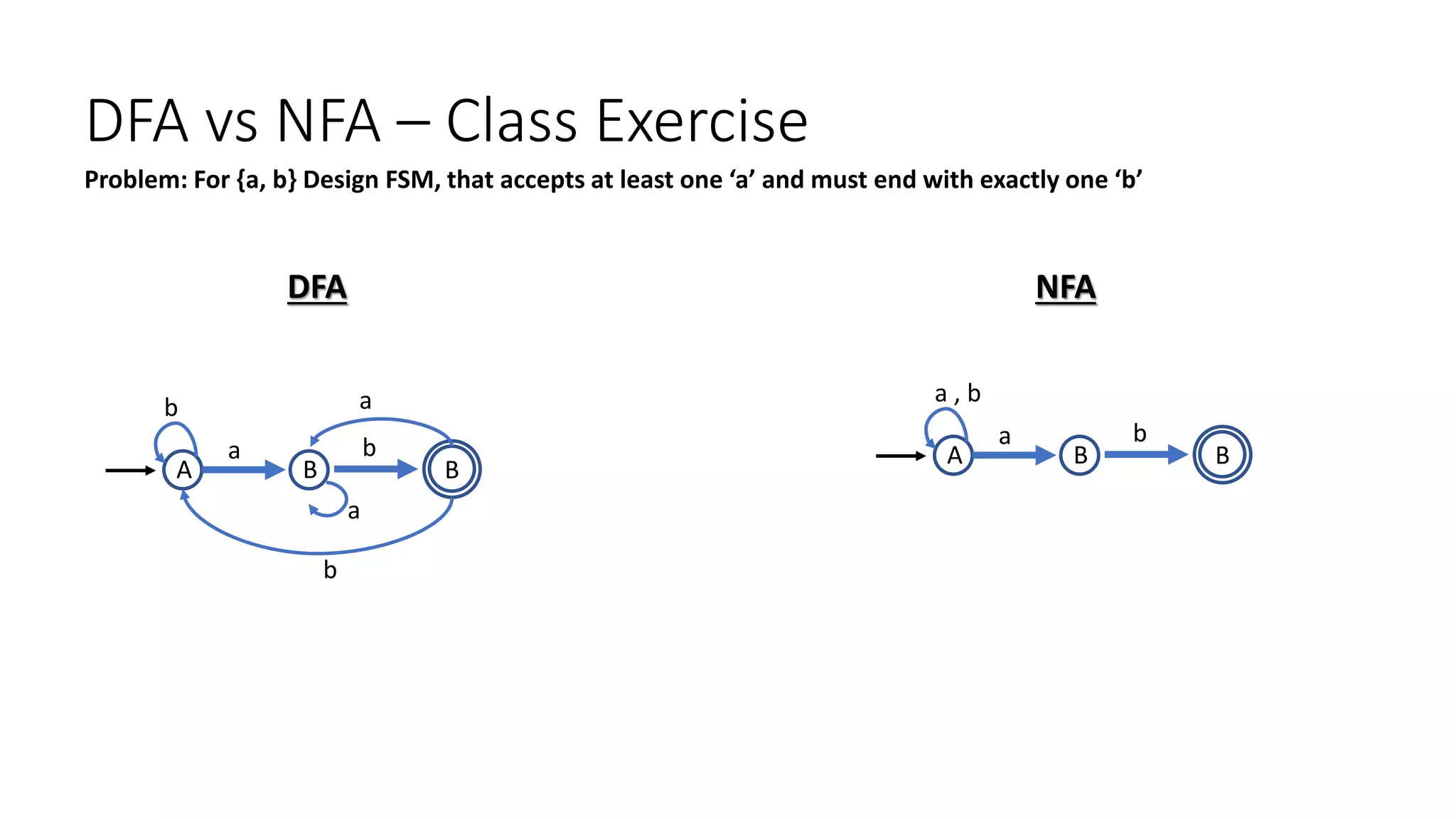
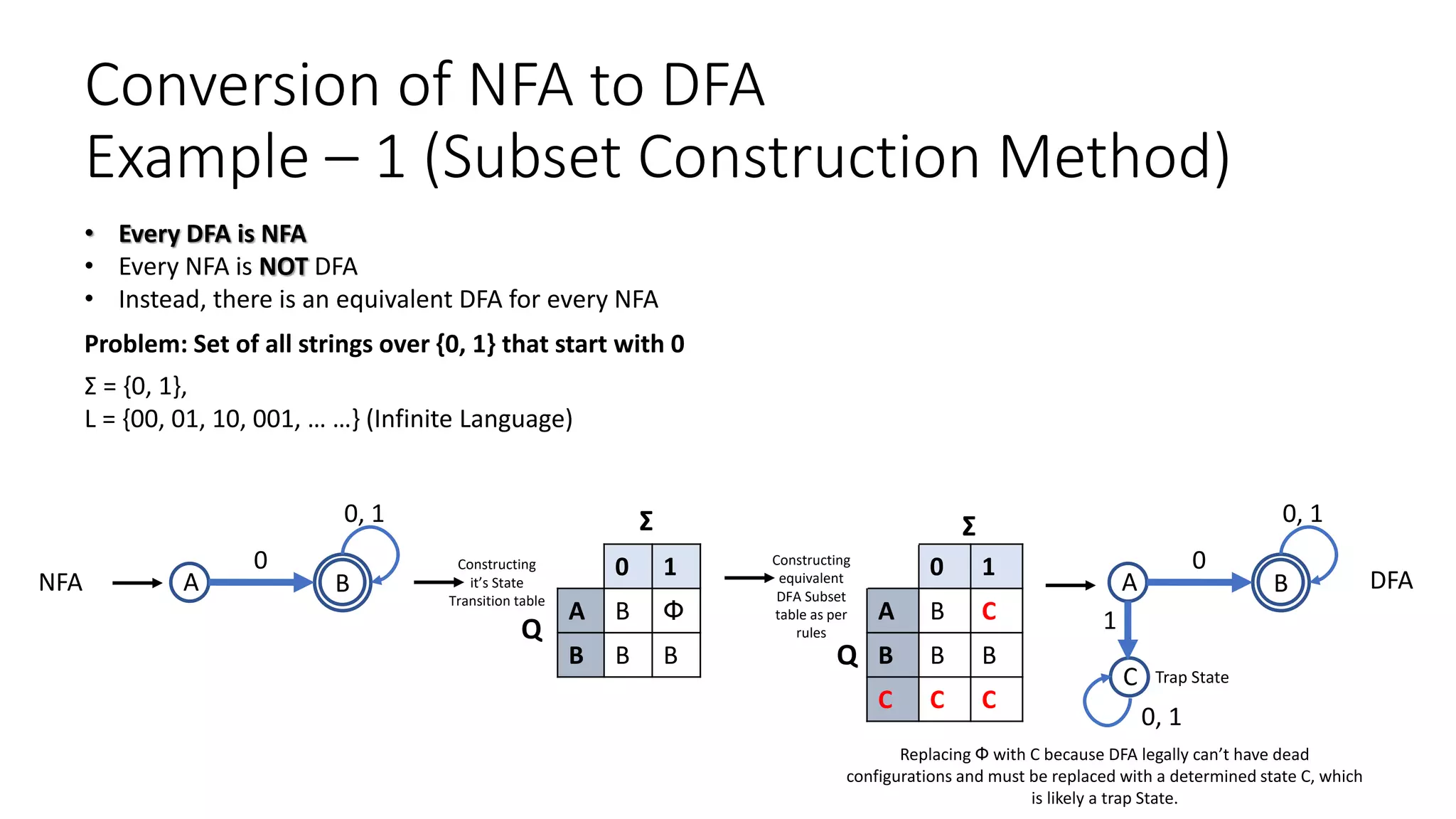
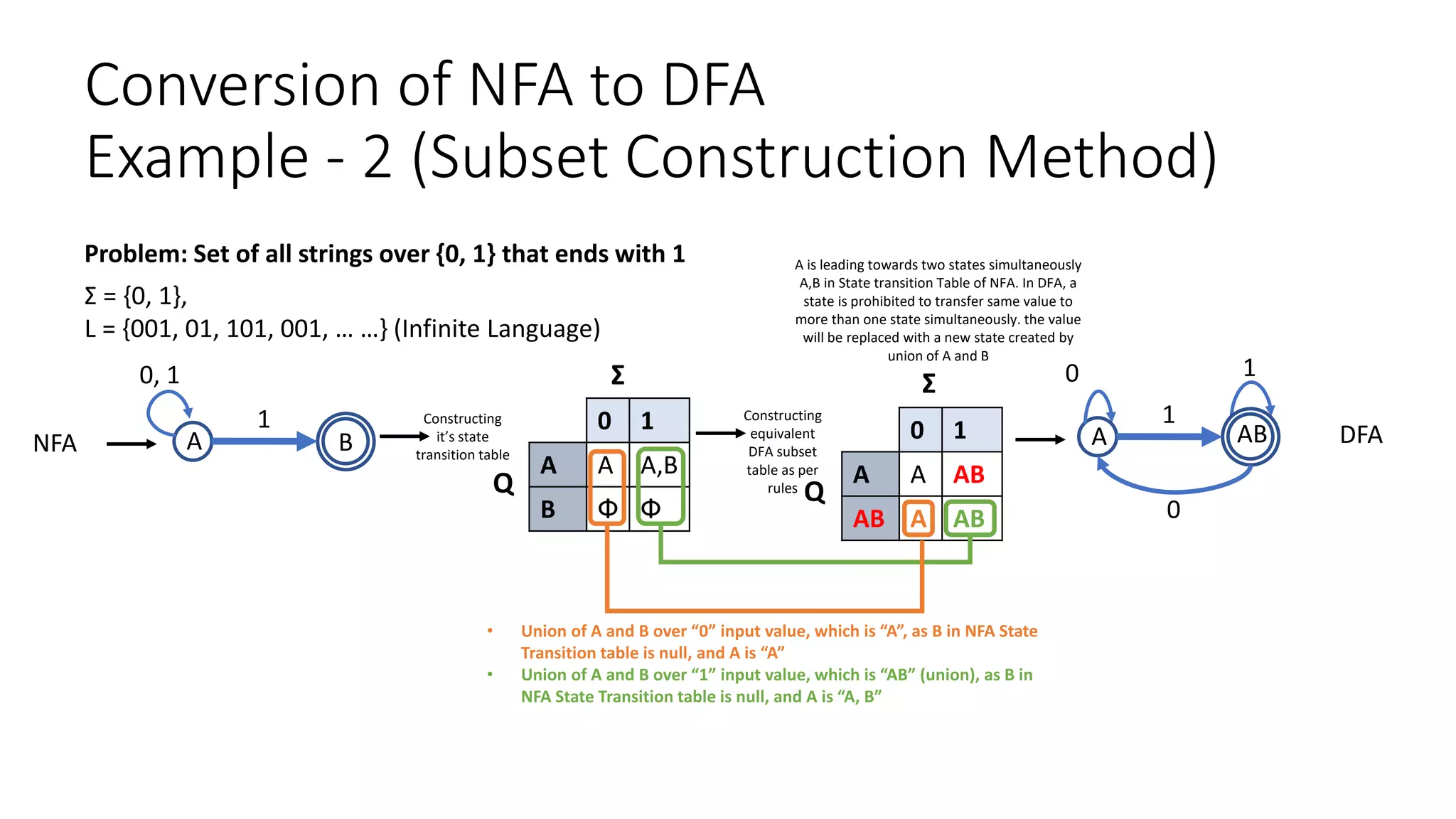
![Conversion of NFA to DFA
Example – 3 (Subset Construction Method)
a b
A AB C
AB AB BC
BC A AB
C D AB
D D D
Find the equivalent DFA for the NFA given by M = [{A,B,C}, (a,b), δ, A, {C} ] where δ is
given by:
a b
A A,B C
B A B
C - A,B
Σ
Q
=
M = [{A,B,C}, (a, b), δ, A, {C} ]
Q Σ δ q F
Formal Representation
of an NFA
A B
a b
C
b
NFA State
Transition
Diagram
a
b a
b
Union of A, B from given δ against
corresponding 0 and 1
Union of B, C from given δ against
corresponding 0 and 1
Combining 2 states into one in order to maintain
deterministic property
“C” was final state in given δ, so
we will make every state final
which have C
AB
A
D
C
BC
a
b b
a
a
b
b
a
a,b Remember! It is most likely
that you’ll find next state
while constructing
transition table for DFA. You
have to use given NFA table
for union operations only
“
“](https://image.slidesharecdn.com/cs5th-230109140132-af5e9d29/75/CS-5th-pptx-21-2048.jpg)
